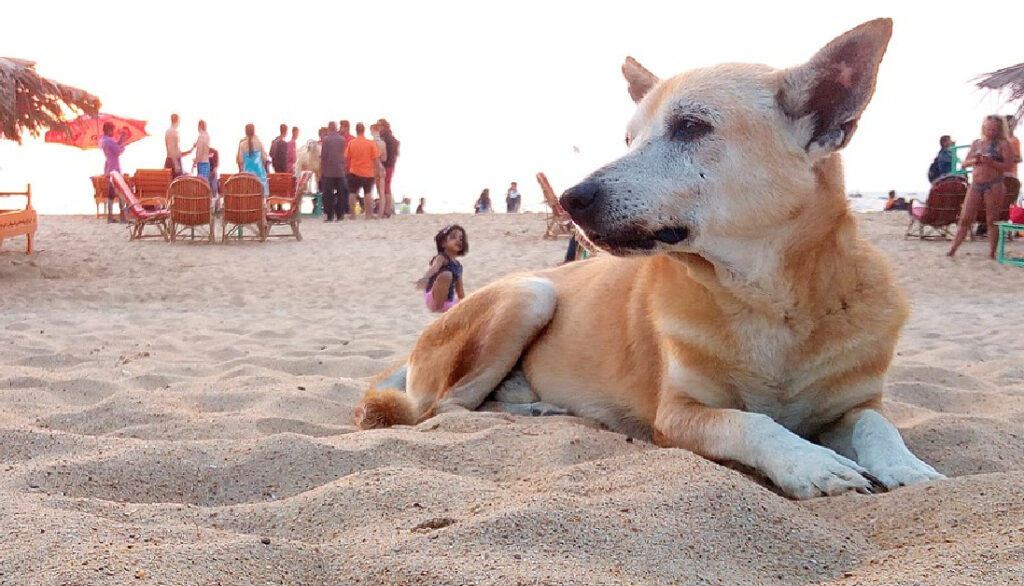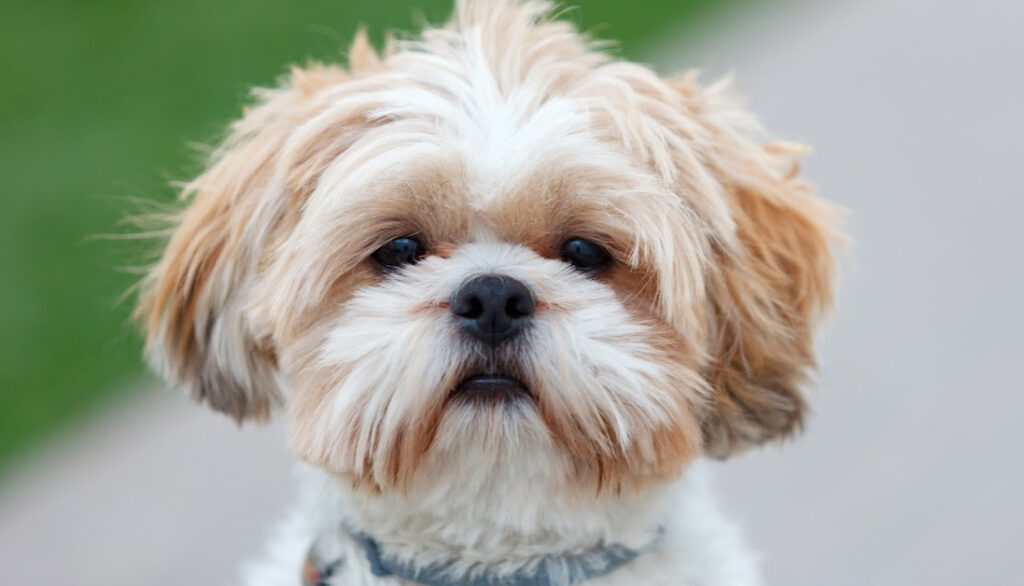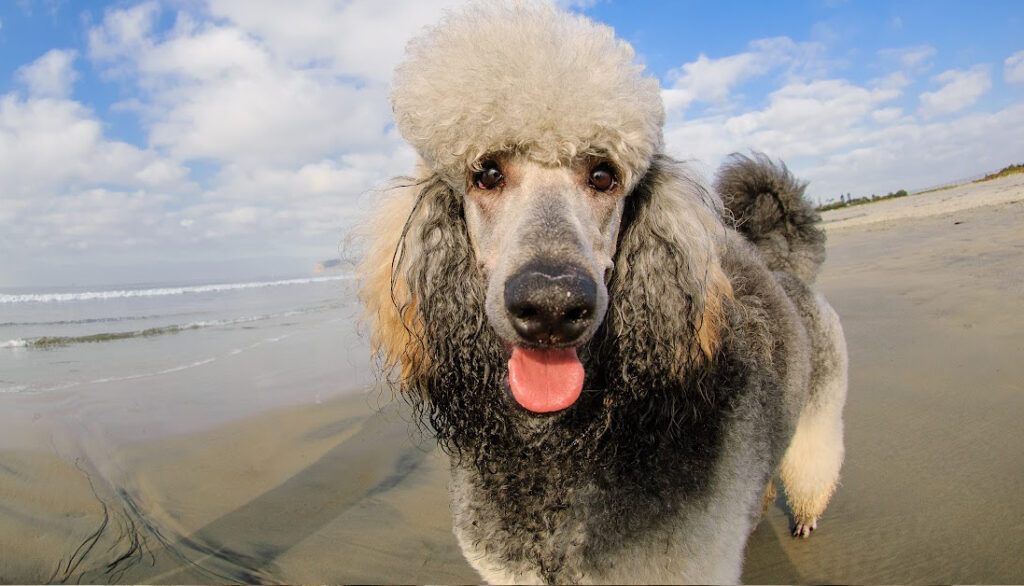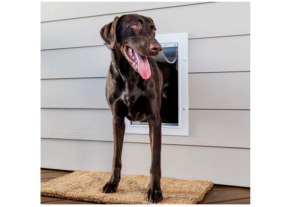Have you ever considered the intricate connections between the climate, history, and culture of a place, and the types of dogs that thrive there? Well, sit back and let me take you on a fascinating journey exploring the world of dog breeds in the Philippines. As a holistic veterinarian, I’ve seen firsthand the unique bond between Filipinos and their canine companions. Dogs aren’t just pets here; they’re cherished family members.

With its tropical climate, the Philippines is home to a wide array of canine breeds. Selecting a breed that’s well-suited to our weather is crucial for the well-being of your furry friend. It might surprise you to know that not only foreign breeds but also our indigenous dogs possess unique traits that let them thrive in Filipino households.
Delving into the history of dog breeding in the Philippines, we discover a fascinating blend of indigenous and foreign influences. Our own native breed, the Askal, has a rich history and carries within its genes the tale of the Filipino canine heritage. Meanwhile, foreign breeds have found a home in our islands, adding to the diversity of our canine population.
Today, there’s a plethora of popular dog breeds in the Philippines. Each breed has its unique allure, shaped by factors such as temperament, adaptability, and size. From the playful Shih Tzu to the loyal German Shepherd, the choices are as varied as our own Filipino families.
As we journey through this guide, we’ll explore the dog breeds Philippines has to offer. We’ll delve into suitable breeds for our tropical weather, the essentials of dog care, and the importance of training and socialization. There’s a wealth of knowledge waiting for you, whether you’re a seasoned dog parent or planning to welcome your first pup. So, are you ready? Let’s delve into the world of Filipino canine breeds together!

History of Dog Breeding in the Philippines
Dive into a captivating journey back in time as we unravel the rich and diverse history of dog breeding in the Philippines. The story of Philippine canine breeds is a tale of survival, adaptation, and cultural integration—a narrative that will not only give you a deeper understanding of your furry friend’s origins but also a newfound appreciation for their unique attributes.
Indigenous Breeds and Their Origins
The tale of canine breeds in the Philippines begins with the indigenous breed known as the “Askal.” Characterized by their hardiness, intelligence, and ability to adapt, Askals are a staple in many Filipino households. The term “Askal” is derived from the local words “aso” meaning dog, and “kalye” meaning street, illustrating their origins as street dogs. The Askal is not a specific breed, but rather a mix of various breeds that have adapted to survive the tropical climate and challenging living conditions in the Philippines.
Askals have been an integral part of Filipino society for centuries, serving roles as hunting companions, guard dogs, and beloved family pets. Despite their humble origins, Askals are now receiving recognition for their resilience, loyalty, and versatility, with increasing efforts to protect and promote this indigenous breed.
Influence of Foreign Breeds on the Philippine Canine Population
The Philippine canine history is also marked by the introduction of foreign breeds during different periods of colonization and trade. Spanish colonizers brought breeds like the Bichon Frise and the Andalusian Hound, which interbred with the local Askals, creating a unique blend of traits.
The American colonization period introduced popular breeds such as the Beagle, Labrador Retriever, and American Pit Bull Terrier, significantly influencing the local canine population’s genetic makeup. These breeds were prized for their specific traits, from the Beagle’s scent-tracking abilities to the Labrador’s aptitude for retrieving.
The influx of these foreign breeds marked a shift in the perception of dogs in the Philippines. Dogs began to be seen not just as functional companions but also as status symbols and reflections of their owners’ personal style and preferences. This trend has continued to the present day, with a steady rise in the popularity of purebred dogs and specialized breeds.
However, with this increased interest in foreign breeds, there is a growing concern about the impact on the health and diversity of the local canine population. These issues highlight the importance of responsible breeding practices and preservation of native breeds like the Askal, ensuring that the rich tapestry of Philippine dog breeds continues to thrive.
As we explore the fascinating world of Filipino dog breeds, we’re reminded that each breed’s story is interwoven with the nation’s history, culture, and environment. This tapestry of dog breeds in the Philippines is a testament to the country’s diverse heritage and the enduring bond between humans and their canine companions.
The Most Popular Dog Breeds in the Philippines
Top Breeds for Filipino Families
When it comes to the most popular dog breeds in the Philippines, there are several that stand out due to their adaptability to the tropical climate, friendly disposition, and manageable size. Here are the top contenders.
– Askals: Also known as “asong kalye” or street dogs, these native dogs are a common sight in the Philippines. They are known for their resilience, adaptability, and loyalty.
– Shih Tzu: This breed is a favorite among Filipino families for their compact size, endearing looks, and friendly nature. They are great companion dogs and adapt well to apartment living.
– Labrador Retriever: Labs are loved worldwide, and the Philippines is no exception. They are renowned for their intelligence, trainability, and gentle demeanor, making them excellent family pets.
– Beagle: Despite their penchant for mischief, Beagles are loved for their compact size, energetic personality, and adorable looks.
– Poodles: Poodles, especially the toy and miniature varieties, are popular for their hypoallergenic coat, intelligence, and elegant looks.
Factors Influencing Breed Popularity in the Philippines
Several factors contribute to the popularity of these dog breeds in the Philippines. Here are some of the key influences:
– Climate Adaptability: The Philippines has a tropical climate, and not all breeds can comfortably adapt to the heat and humidity. Breeds that can tolerate these conditions are generally more popular.
– Size: With a majority of the population living in urban areas or apartments, smaller breeds that are easier to manage in limited space are preferred.
– Temperament: Filipinos love friendly, sociable dogs. Breeds that are known for their good nature, intelligence, and ease of training are more prevalent in Filipino households.
– Maintenance: Breeds that require less grooming and have fewer health issues are also favored, as they are easier and more affordable to care for.
– Cultural Factors: Some breeds may be popular due to cultural influences. For example, the Shih Tzu is commonly believed to bring good luck, contributing to its popularity in the Philippines.
By understanding these factors, potential dog owners in the Philippines can make more informed decisions when choosing their next canine companion. Remember, while breed characteristics can provide a general guide, each dog is unique and deserves love, care, and understanding, regardless of their breed or origin.
Dog Breeds Philippines: A Comprehensive Guide to Filipino Canine Breeds
Native Filipino Dog Breeds
Being a dog parent in the Philippines, it’s only natural to be curious about the native dog breeds of our homeland. These breeds have stood the test of time and have adapted to our local climate and lifestyle. They have a rich history, and they offer a unique blend of traits that make them distinct from foreign dog breeds.
The Philippine Native Dog: The Askal
The Askal, or Asong Pinoy, is the most common native breed in the Philippines. The term “Askal” is a portmanteau of “asong kalye,” meaning “street dog” in Filipino. These dogs are a mixed breed, with no distinct lineage, but they have thrived in the Philippines for centuries.
Askals are well-known for their independence, intelligence, and adaptability. Their physical appearances can vary greatly, but most are medium-sized dogs with short, smooth coats ideal for the tropical climate. They are resilient and can thrive in a variety of environments. Having an Askal as a pet gives you the chance to embrace a piece of our local heritage.
Preserving the Heritage: Efforts to Protect Native Breeds
In recent years, initiatives have been launched to protect and preserve our native dog breeds. There’s the Philippine Native Dog Breeders Association, founded to promote the Askal and other native breeds’ recognition and conservation. They work on creating breed standards, conducting dog shows, and educating the public about the importance of these indigenous dogs.
Another native breed, the Philippine Pitbull, has also gained recognition. This breed, though influenced by American Pitbull Terriers brought to the country, has since developed unique characteristics that make it distinctly Filipino.
Aside from formal initiatives, many Filipinos have taken to adopting Askals, seeing their value beyond being just “street dogs.” This shift in mentality has contributed a lot to the preservation and appreciation of native breeds.
Importance of Native Breeds
Our native dog breeds, like the Askal and the Philippine Pitbull, are more than just pets – they are a part of our cultural heritage. They have evolved along with us, adapting to our way of life and our country’s climate. They’ve been our loyal companions, our guards, and our friends.
These breeds are also a testament to the resilience and adaptability of dogs. Despite not having the pedigree of purebred dogs, they have thrived and continue to thrive in the diverse environments of the Philippines. Their tolerance to local diseases and ability to live in a tropical climate are also unparalleled.
Knowing about these breeds is not just about being a responsible pet owner. It’s about recognizing and appreciating the unique characteristics of these animals that have lived with us for centuries. It’s about preserving our heritage and ensuring that future generations get to know and love these truly Filipino breeds.

List of Specific Breeds Suitable for the Philippine Climate
The Philippines, known for its tropical climate, is a haven for various dog breeds. Choosing a breed that adapts well to this type of weather is crucial. Here, we’ll delve into some breeds that thrive in the country, from small to large ones.
Small Breeds Ideal for Tropical Weather
Small dog breeds are quite popular in the Philippines due to their adaptability to apartment living and the country’s warm climate. Here are some that are well-suited to the Philippine weather:
- Shih Tzu: Known for their affectionate and playful nature, Shih Tzus are a hit among Filipinos. Their long, silky hair might make you think they’re not suitable for tropical climates, but they’re surprisingly resilient. Regular grooming helps them stay cool and comfortable.
- Chihuahua: Despite their small size, Chihuahuas are known for their big personalities. They’re adaptable and can handle the heat better than the cold. Just make sure they have a cool, shaded area to rest during the hottest parts of the day.
- Dachshund: Dachshunds love to play and explore, making them perfect for active families. They adapt well to warm climates, but remember to provide plenty of water and shade to prevent overheating.
Large Breeds That Thrive in the Philippines
While small breeds are popular, some Filipinos prefer larger dogs. Here are a few large breeds that can handle the country’s heat:
- Labrador Retriever: Labradors are known for their friendly and outgoing nature. They love to swim, which is a great way for them to cool off in the tropical heat. Regular exercise and a balanced diet are essential for this active breed.
- Golden Retriever: Another breed well-loved by Filipinos is the Golden Retriever. They’re intelligent, friendly, and adaptable. Their thick coat may seem unsuitable for the heat, but regular grooming and access to cool areas can keep them comfortable.
- Siberian Husky: Despite their origins in the cool climates of Siberia, Huskies can adapt to warmer weather. They require a bit more care, including regular grooming to manage their thick coat and plenty of water to stay hydrated.
Choosing a dog breed that suits the Philippine climate is just one part of responsible pet ownership. It’s also crucial to provide your pet with proper nutrition, regular grooming, and enough physical and mental stimulation to keep them healthy and happy. Whether you prefer a small or large breed, there’s a perfect canine companion for you in the Philippines.
Dog Care Essentials in the Philippines
Nutrition and Diet for Optimal Health
Ensuring that your dog has a balanced diet is crucial for its overall health. Given the diverse range of dog breeds in the Philippines, dietary needs may vary depending on the breed.
Small breeds, like Shih Tzus or Pomeranians, require less food than larger breeds. However, they typically need a diet high in protein and fat to support their energetic nature.
On the other hand, larger breeds like Labrador Retrievers or German Shepherds require a more substantial diet, with a good balance of proteins, carbohydrates, and fats.
Regardless of breed size, your dog’s diet should consist of a balanced mix of proteins, carbohydrates, and fats, along with essential vitamins and minerals.
- Proteins: Serve as the building blocks for body tissues and can help repair damaged cells and make new ones.
- Carbohydrates: Provide energy and include grains, vegetables, and fruits.
- Fats: Also provide energy and help keep your dog’s skin and hair healthy. They also play a crucial role in brain development, especially for puppies.
Remember, always consult with a vet before making any significant changes to your dog’s diet.
Grooming and Maintenance for Tropical Climates
Living in the Philippines means dealing with a tropical climate, which can significantly affect your dog’s grooming and maintenance needs.
In hotter months, dogs with thick fur, like Siberian Huskies or Golden Retrievers, may require more frequent grooming to prevent overheating and skin diseases. Regular baths, brushing, and, if necessary, trimming their fur can help manage this.
In contrast, short-haired breeds like Dalmatians or Beagles have lower grooming needs. However, they still need regular baths and occasional brushing to keep their coat shiny and healthy.
Being a tropical country, the Philippines is also home to various parasites like ticks, fleas, and heartworms. Hence, it’s crucial for all dogs, regardless of their breeds, to have regular deworming and anti-flea treatments.
Finally, dental care should not be neglected. Regular brushing of your dog’s teeth and vet-approved dental treats can contribute significantly to their oral health.
Remember, a well-cared-for dog is a happy dog. Ensuring that your dog gets the right nutrition and grooming can help them lead a healthier and happier life. Regardless of their breed, all dogs deserve proper care and love. And as their human, it is your responsibility to provide them that in the tropical paradise of the Philippines.

Training and Socialization of Dogs in the Philippines
Training and socialization are integral parts of owning a dog, whatever the breed. In the Philippines, with its unique culture and climate, there are certain considerations to take into account. Let’s dive into the essentials every Filipino dog owner needs to know.
Basic Training Tips for Filipino Dog Owners
Whether you’ve adopted an Askal or purchased a popular breed like a Shih Tzu or Labrador Retriever, basic training is essential. Here are some pointers:
- Start Early: As with learning any new skill, it’s much easier for dogs to absorb training when they’re young. Begin basic commands such as ‘sit’, ‘stay’, ‘come’ as soon as your puppy is comfortable in its new home.
- Consistency: Use the same command words and gestures each time to avoid confusing your dog. Make sure everyone in the household is on the same page.
- Positive Reinforcement: Dogs respond well to rewards. Use treats, toys, or lots of praise to encourage good behavior.
- Patience: Remember, not all dogs learn at the same pace. Patience is key. If you’re feeling frustrated, take a break and try again later.
Socialization Strategies for a Well-Adjusted Canine
Socialization is just as important as training. It helps your pet become a well-behaved, confident member of the family. Here are some tips:
- Expose to Different Environments: Take your dog to different places – parks, beaches, busy streets. This exposure helps them become comfortable in various situations.
- Introduce to Different People and Animals: Meeting various people and other animals will make your dog more adaptable and less likely to behave aggressively.
- Join a Dog Club or Group: In the Philippines, there are various dog clubs where you can meet fellow dog owners. This is a great opportunity for your dog to interact with others.
- Enroll in Socialization Classes: Professional trainers can offer insights into dog behavior and guide you through the socialization process.
It’s important to note that while certain breeds may be more predisposed to certain behaviors, every dog is an individual. Training and socialization should be tailored to your dog’s specific needs and personality.
Remember, a well-trained and well-socialized dog not only makes for a happier pet but also contributes to a more harmonious community. As a responsible dog owner in the Philippines, it’s your duty to ensure that your canine companion is a well-mannered and welcome addition to society.
Just like with humans, the process of learning and socializing is ongoing for dogs. So, keep at it and enjoy the journey of growth with your furry friend. And remember, even the most well-behaved dog will have its off days. That’s okay. What’s important is the progress you’re making together.
With these tips in mind, you’re well on your way to raising a happy, healthy, and well-adjusted dog here in the Philippines. Good luck, kaibigan!
Adopting Dogs from Shelters and Rescues
When considering adding a new furry friend to the family, adoption should always be considered. In the Philippines, countless dogs are in need of a loving home. Animal rescues and shelters house a diverse variety of breeds, including both purebred and mixed breeds.
- PAWS (Philippine Animal Welfare Society): Known for their relentless advocacy for animal rights, PAWS often houses a range of breeds ready for adoption.
- Island Rescue Organization (IRO): Located in Cebu, IRO cares for abandoned and abused dogs, many of which are of native Philippine breeds.
- Animal Kingdom Foundation (AKF): This organization rescues dogs from the illegal dog meat trade, providing them a second chance at life.
Adopting a dog not only offers them a new lease on life but also makes room for other animals in need at the shelter. It’s a rewarding process that never fails to bring joy to both the pet and its new owners.
The Importance of Responsible Ownership and Its Impact on Breed Health
Earning the title of a dog owner goes beyond providing food, water, and shelter. It involves a commitment to ensuring the well-being and health of your pet. Here in the Philippines, responsible dog ownership is extremely crucial given our unique climate and the distinct needs of various dog breeds.
Proper Nutrition: Providing a balanced diet is fundamental. Different breeds have varying nutritional needs, and it’s necessary to understand what will benefit your pet’s health the most.
Regular Exercise: Exercise is vital for all dog breeds. Whether it’s a daily walk or an engaging play session, physical activity helps maintain a healthy weight and promotes better heart health.
Routine Check-ups: Regular vet visits allow for early detection of potential health issues, ensuring your dog stays in the best possible condition.
Training and Socialization: A well-trained and socialized dog is not only a joy to be around but also contributes to a healthier mental state for the pet.
Proper Grooming: Regular grooming, particularly in our tropical climate, helps prevent skin diseases and maintains the overall cleanliness of your dog.
In the end, the impact of responsible ownership reflects heavily on the health of the breed. A well-taken care of dog, regardless of its breed, can live a fuller, happier life. They become healthier, well-adjusted, and positively contribute to the overall perception and understanding of their breed.
Understanding the ins and outs of responsible dog ownership is the first step to experiencing the joys and rewards of having a canine companion. Whether you opt for a purebred dog or choose to adopt from a shelter, remember that these animals are more than just pets. They become family, and like any family member, they deserve love, care, and a lifelong commitment. Embracing this enriches not only the lives of these fantastic creatures but yours as well. Dog ownership in the Philippines, as anywhere in the world, is a journey filled with kindness, learning, and endless tail wags. And trust us, it’s worth every bit of it!
Frequently Asked Questions
Q1: What are some popular dog breeds in the Philippines?
A: Some popular dog breeds in the Philippines include the Askal, Bichon Frise, Dachshund, and Siberian Husky.
Q2: What is the Askal breed?
A: The Askal, also known as the Asong Pinoy, is a mixed-breed dog native to the Philippines. They are known for their resilience and adaptability.
Q3: Are there any dog breeds that are native to the Philippines?
A: Yes, the Askal and the Philippine Pitbull are both native to the Philippines.
Q4: What are some considerations when choosing a dog breed in the Philippines?
A: When choosing a dog breed in the Philippines, it’s important to consider the dog’s size, temperament, and care requirements, as well as the local climate and your living situation.
Q5: Are there any restrictions on dog breeds in the Philippines?
A: There are no specific restrictions on dog breeds in the Philippines, but some condominiums and apartments may have rules about the size and breed of dogs allowed.
Dr. Candy, a holistic veterinarian and certified raw dog food nutrition specialist, graduated from Oklahoma State University in 2009 with a DVM and has since specialized in companion animal nutrition, advocating for species-specific diets. With a background in wildlife rehabilitation and oil spill response, she combines holistic health and conventional medicine in her unique approach to treating chronic diseases, allergies, and autoimmune conditions in pets. As the owner of a veterinary practice in Colorado and an author, Dr. Candy is dedicated to educating pet parents and improving the health and happiness of animals.




